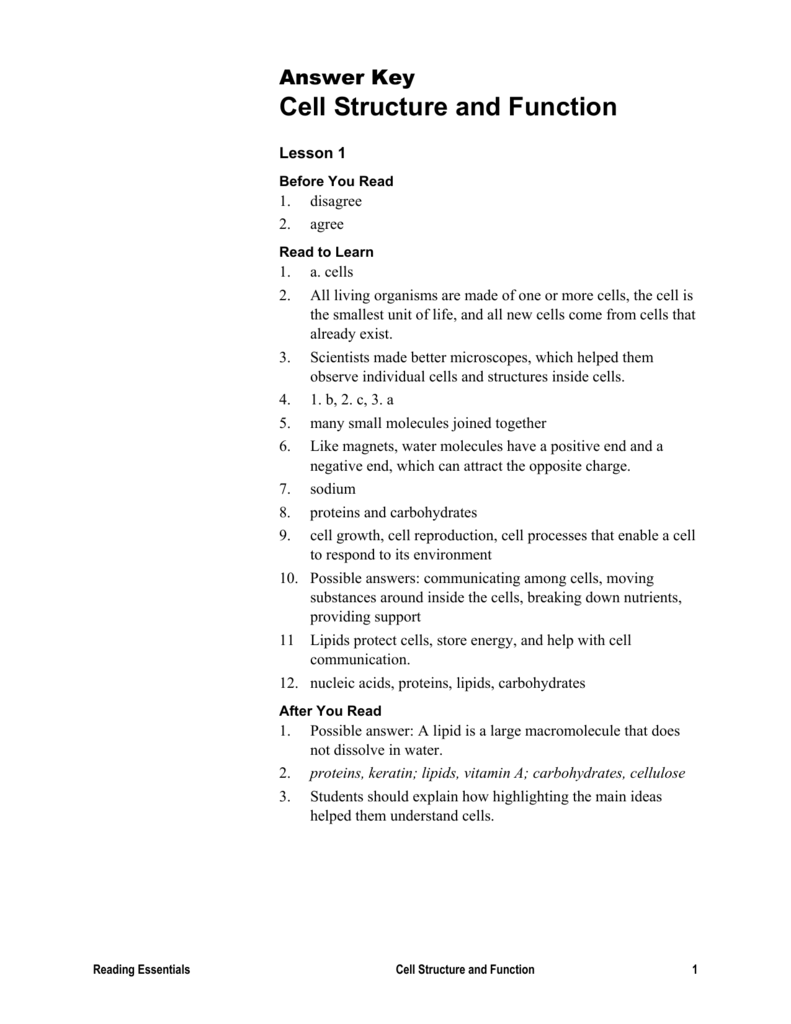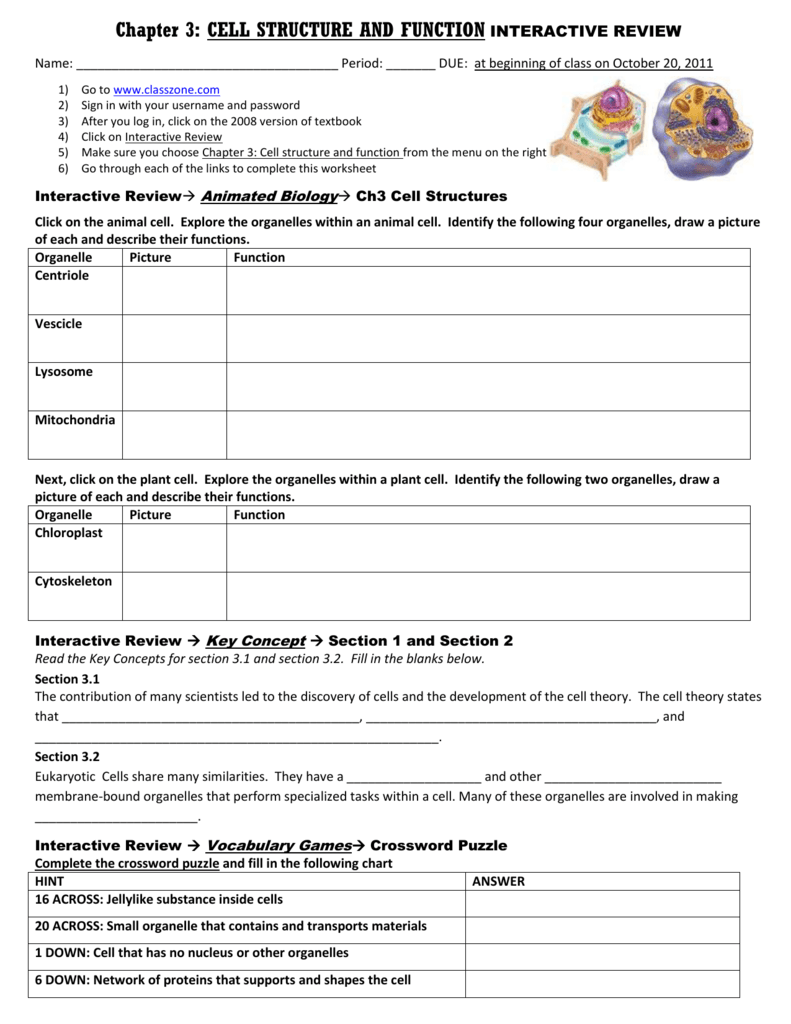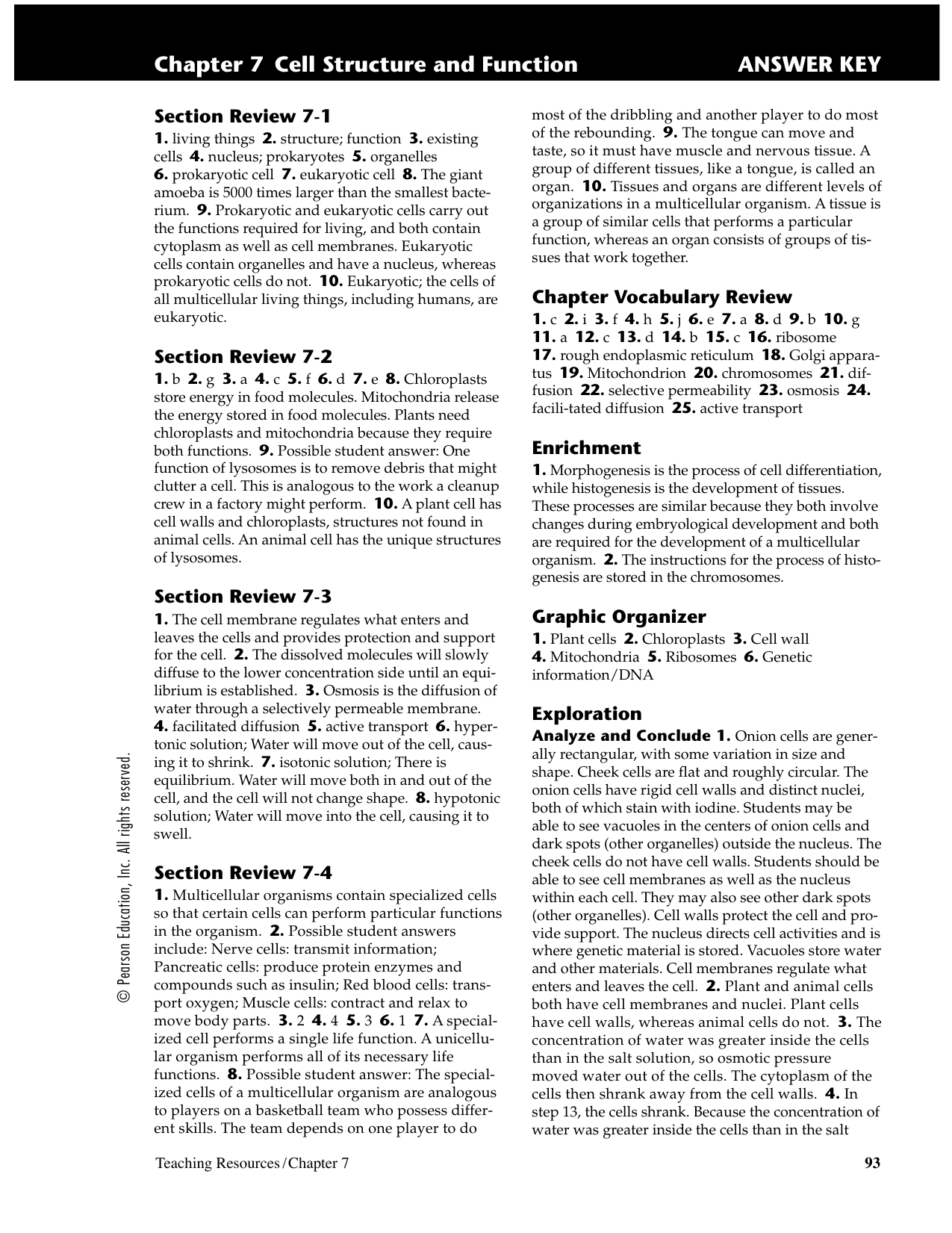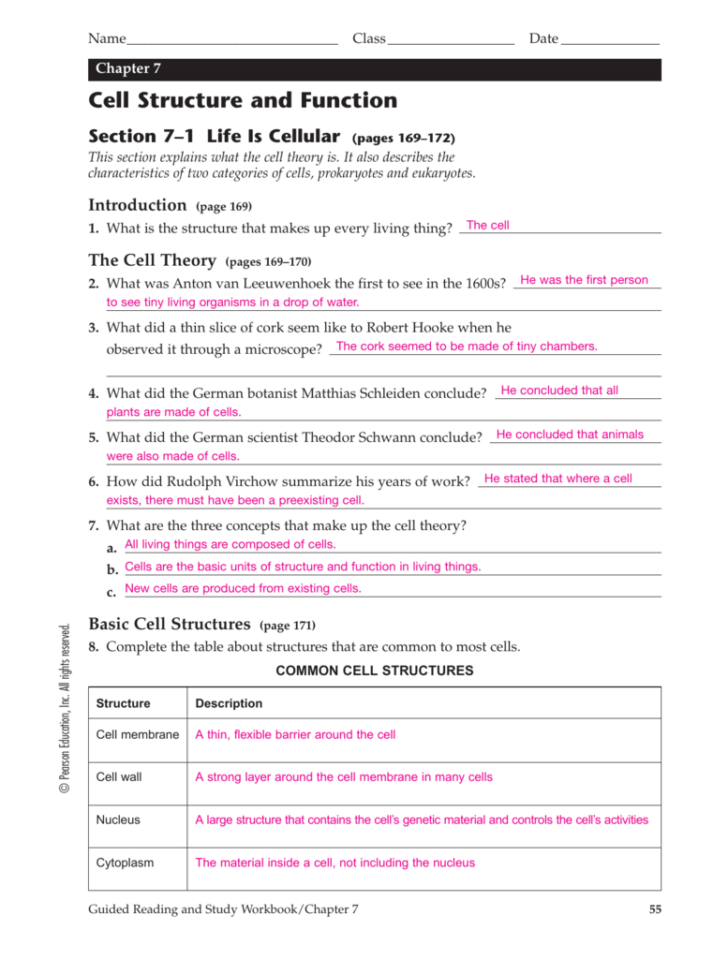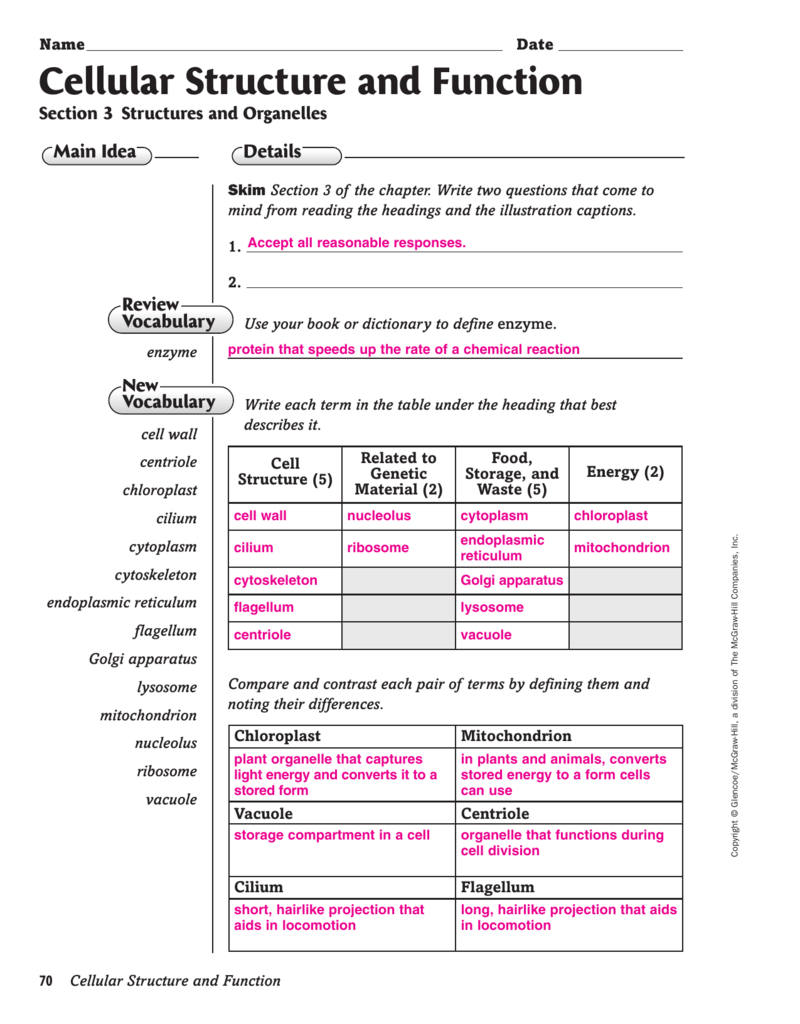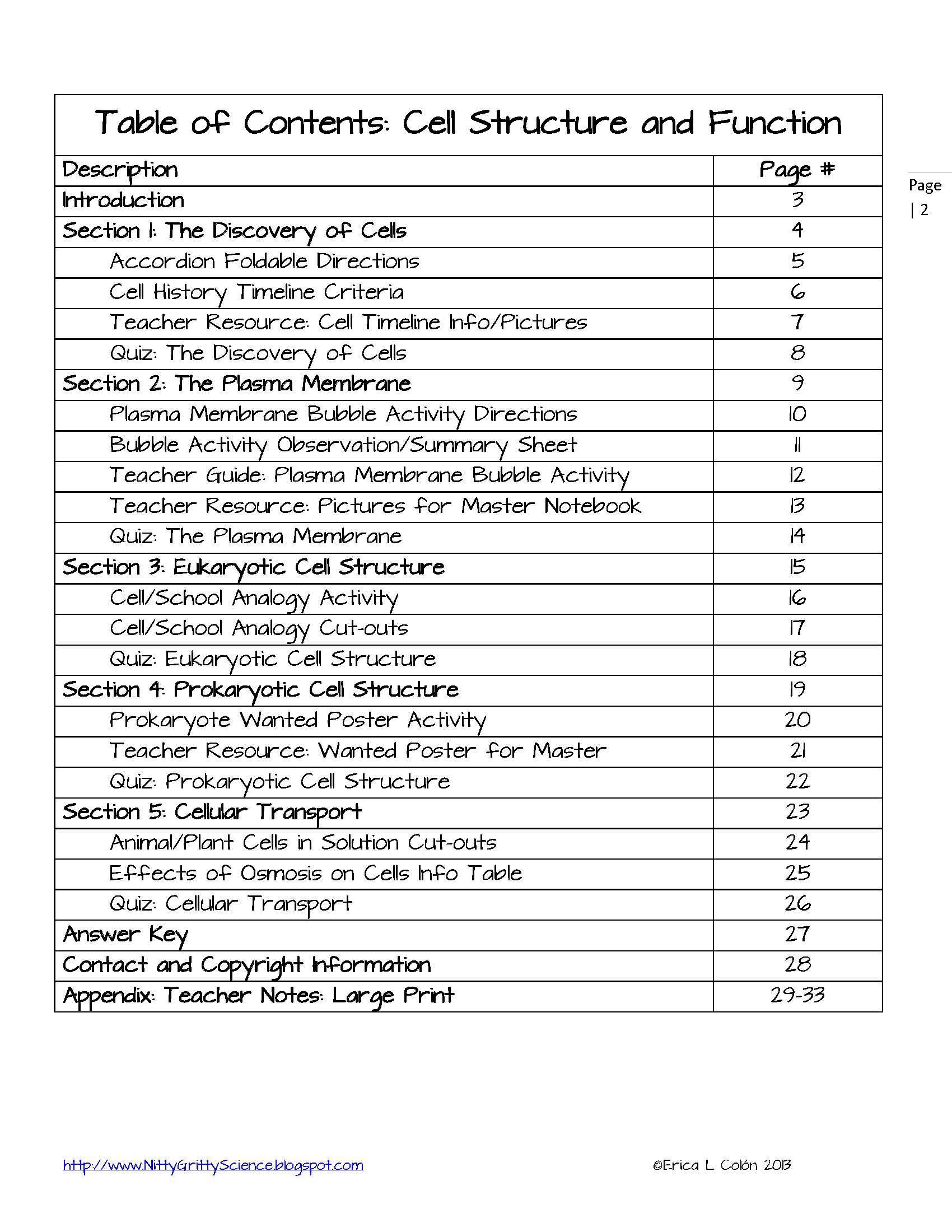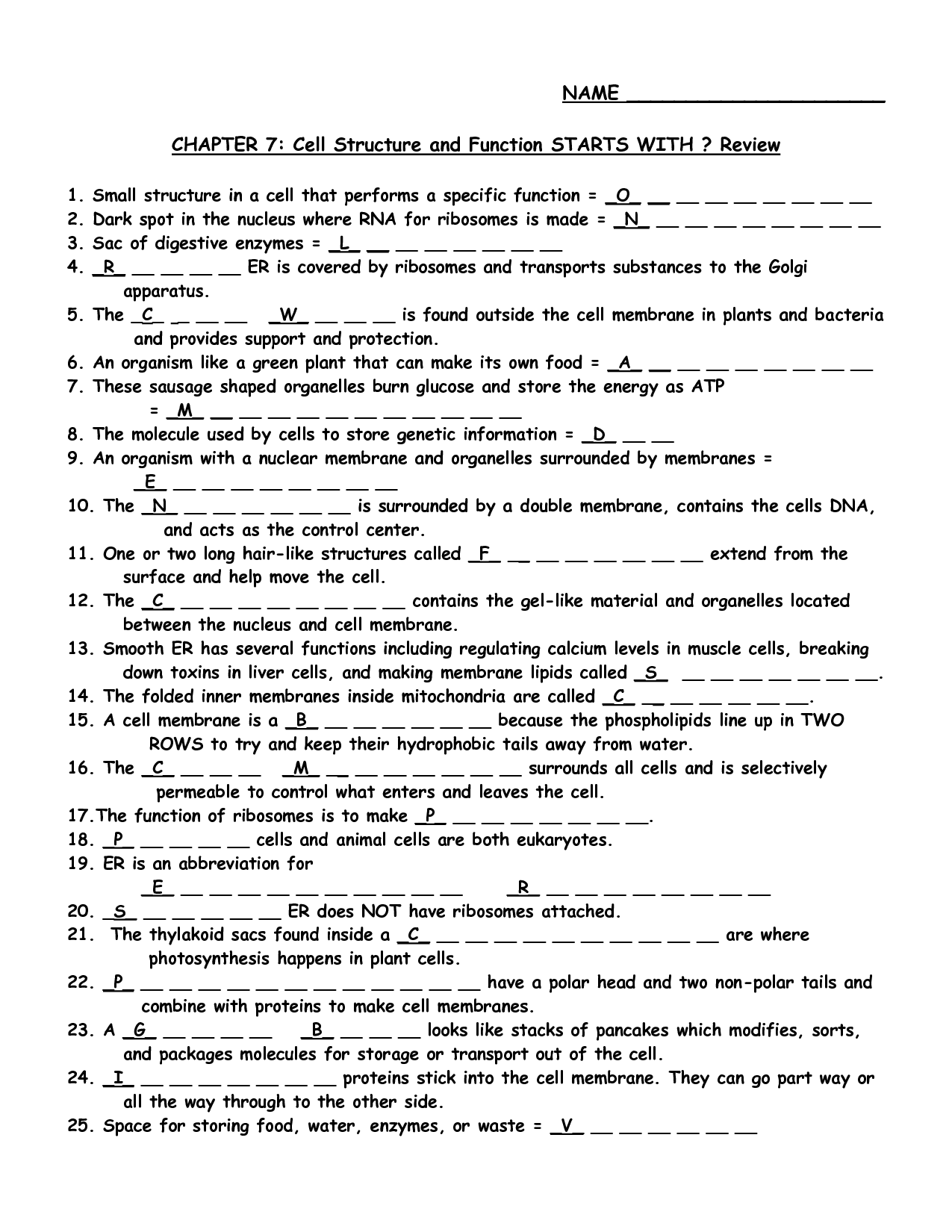Chapter 3 Cell Structure And Function Answer Key
Chapter 3 Cell Structure And Function Answer Key - Proteins are made on ribosomes. Forms a boundary between inside and outside of the cell. Click the card to flip 👆. Click the card to flip 👆. Web cellular structure and function worksheets. Web chapter 3 cell structure and function quiz answers. Web a group of organs that work together in performing vital body functions. All organisms are made of more than one cell. Ribosomes are found in the cytoplasm or are attached to the cytoplasmic side of the plasma membrane. All organisms are made of cells, all existing cells are produced by other living cells, cell is basic unit of life.
A) nucleus b) centrioles c) cell. How a chance discovery in a london laboratory revolutionized medicine. Web figure 3.1 (a) nasal sinus cells (viewed with a light microscope), (b) onion cells (viewed with a light microscope), and (c) vibrio tasmaniensis bacterial cells (viewed using a scanning electron microscope) are from very different organisms, yet all share certain characteristics of basic cell structure… Forms a boundary between inside and outside of the cell. Used under license from shutterstock.com. All organisms are made of cells, all existing cells are produced by other living cells, cell is basic unit of life. A rigid layer of nonliving material that surrounds the cells of plants and some other organisms. What structural features are shared by all cells and what are the key differences between prokaryotic and eukaryotic cells?. Web chapter 3 cell structure and function biology. Ribosomes are found in the cytoplasm or are attached to the cytoplasmic side of the plasma membrane.
Jellylike substance that contains dissolved. How a chance discovery in a london laboratory revolutionized medicine. It is a living structure that is very thin,. Called the powerhouse of the cell. All organisms are made of more than one cell. Web terms in this set (50) cell theory. The smallest living things are. Prokaryotic cells have a nucleus. Web figure 3.1 (a) nasal sinus cells (viewed with a light microscope), (b) onion cells (viewed with a light microscope), and (c) vibrio tasmaniensis bacterial cells (viewed using a scanning electron microscope) are from very different organisms, yet all share certain characteristics of basic cell structure… A rigid layer of nonliving material that surrounds the cells of plants and some other organisms.
Answer Key Reading essentials c.2 Cell Structure and Function
Prokaryotic cells have a nucleus. A) nucleus b) centrioles c) cell. Web the cell membrane has two major functions. At grade | created by: At grade | created by:
Chapter 3 CELL STRUCTURE AND FUNCTION
Substances in and out the cell. A rigid layer of nonliving material that surrounds the cells of plants and some other organisms. Web 3.0 cellular structure and function. At grade | created by: The cell structure & function chapter of this holt mcdougal biology companion course helps students learn the essential lessons associated with cell structure and function.
Chapter 7 Cell Structure And Function Answer Key —
Substances in and out the cell. Forms a boundary between inside and outside of the cell. The plasma membrane forms the physical boundary between the cell. Web figure 3.1 (a) nasal sinus cells (viewed with a light microscope), (b) onion cells (viewed with a light microscope), and (c) vibrio tasmaniensis bacterial cells (viewed using a scanning electron microscope) are from.
Chapter 3 Cell Structure And Function Crossword Puzzle Answer Key
Web the plasma membrane is a phospholipid bilayer embedded with proteins. Web figure 3.1 (a) nasal sinus cells (viewed with a light microscope), (b) onion cells (viewed with a light microscope), and (c) vibrio tasmaniensis bacterial cells (viewed using a scanning electron microscope) are from very different organisms, yet all share certain characteristics of basic cell structure… How a chance.
Chapter 7 Cell Structure And Function Worksheet Answer Key —
You will learn more about these amazing building blocks of life when you read this chapter. Web cellular structure and function worksheets. How a chance discovery in a london laboratory revolutionized medicine. At grade | created by: Click the card to flip 👆.
Chapter 7 Cell Structure And Function Worksheet Answer Key —
A cell structure that controls which substances can enter or leave the cell. Cell membrane — each cell is surrounded by a membrane which is called cell membrane. Click the card to flip 👆. Web a group of organs that work together in performing vital body functions. Web the cell membrane has two major functions.
Chapter 3 Cell Structure And Function Worksheet Answers Nidecmege
At grade | created by: Forms a boundary between inside and outside of the cell. Consists of a glycerol, a phosphate group, and two fatty acids. Prokaryotic cells have a nucleus. Proteins are made on ribosomes.
Cell Processes And Energy Guided Reading And Study Cell Division
A) nucleus b) centrioles c) cell. Web structure within the nucleus that comprises chromatin that contains dna, the hereditary material cilium (plural: A cell structure that controls which substances can enter or leave the cell. Proteins are made on ribosomes. Amount of substance in a certain location.
31 Chapter 3 Cell Structure And Function Worksheet Answers support
You will learn more about these amazing building blocks of life when you read this chapter. A cell structure that controls which substances can enter or leave the cell. Cell membrane — each cell is surrounded by a membrane which is called cell membrane. Click the card to flip 👆. Web a group of organs that work together in performing.
You Will Learn More About These Amazing Building Blocks Of Life When You Read This Chapter.
Web terms in this set (50) cell theory. How a chance discovery in a london laboratory revolutionized medicine. Web a group of organs that work together in performing vital body functions. Web 3.0 cellular structure and function.
Called The Powerhouse Of The Cell.
All organisms are made of cells, all existing cells are produced by other living cells, cell is basic unit of life. At grade | created by: Forms a boundary between inside and outside of the cell. Web figure 3.1 (a) nasal sinus cells (viewed with a light microscope), (b) onion cells (viewed with a light microscope), and (c) vibrio tasmaniensis bacterial cells (viewed using a scanning electron microscope) are from very different organisms, yet all share certain characteristics of basic cell structure…
Take Your Cellular Knowledge To The Next Level!
The plasma membrane forms the physical boundary between the cell. The three essentials parts of the cell are cell membrane, cytoplasm and nucleus. Click the card to flip 👆. The smallest living things are.
What Structural Features Are Shared By All Cells And What Are The Key Differences Between Prokaryotic And Eukaryotic Cells?.
Consists of a glycerol, a phosphate group, and two fatty acids. A cell structure that controls which substances can enter or leave the cell. Idea that all living things are composed of cells, cells are the basic units of structure and function in living things, and new cells are produced from existing cells. It is a boundary of the cell with many functions:
